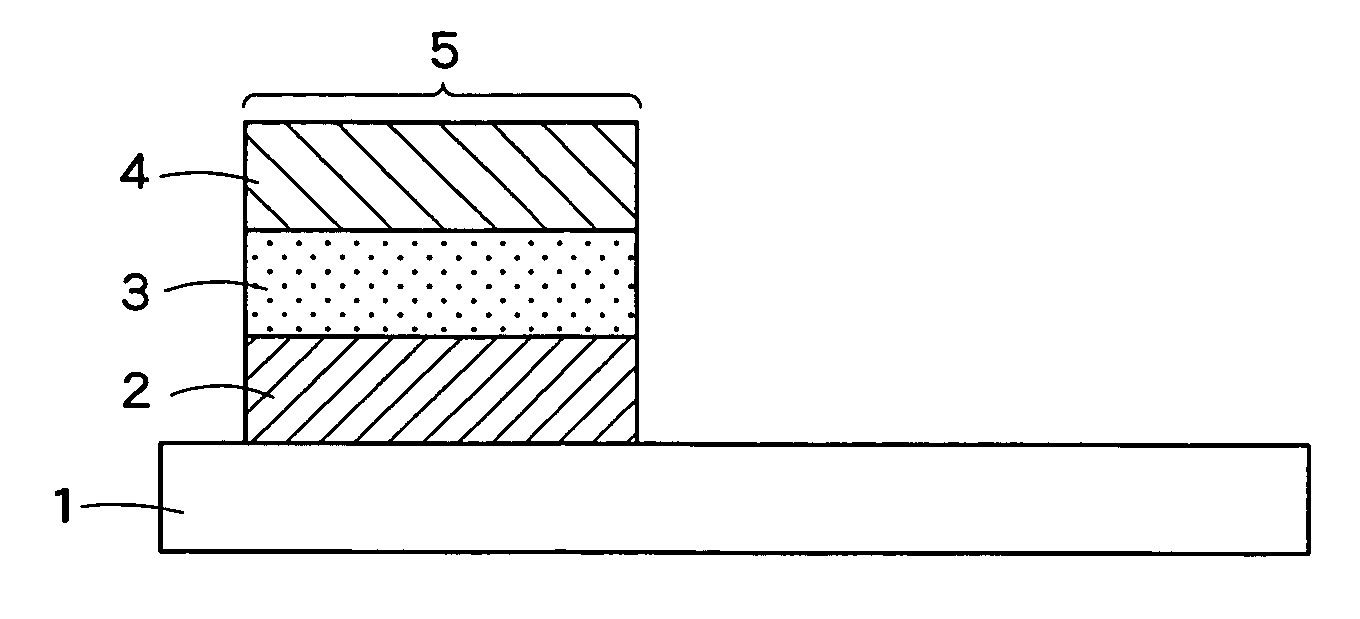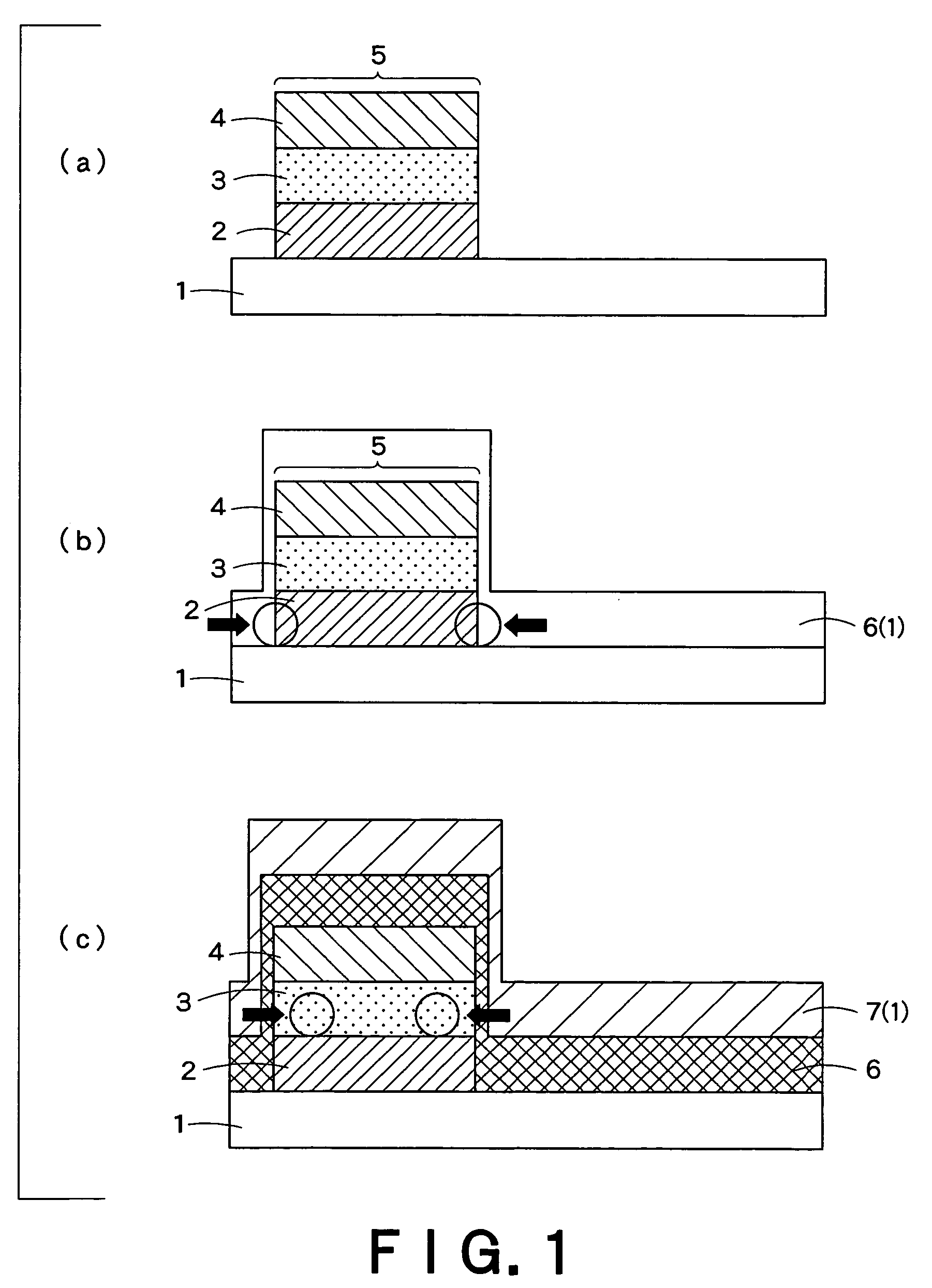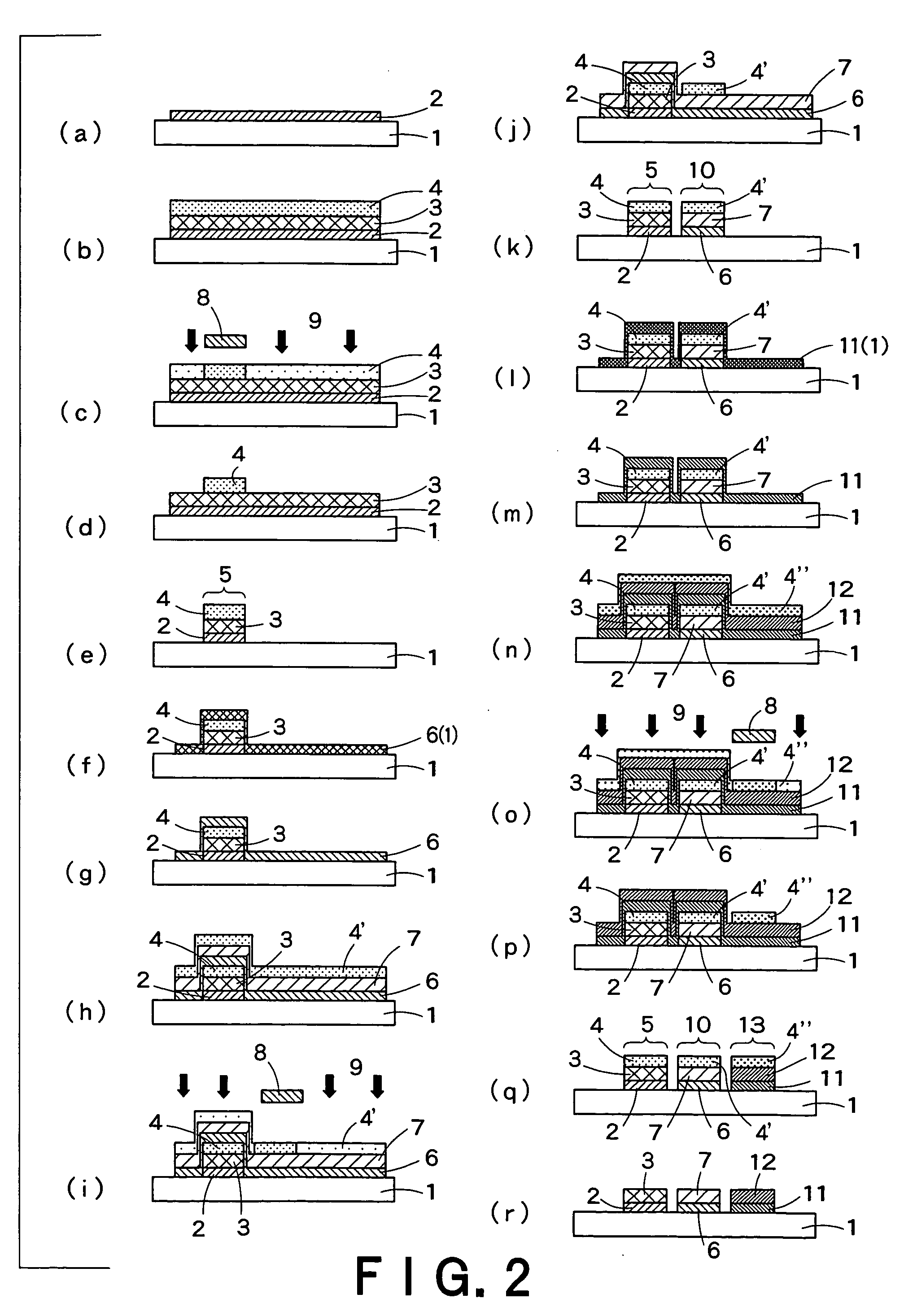Process for production of electroluminescent element and electroluminescent element
a technology of electroluminescent elements and electroluminescent elements, which is applied in the direction of photomechanical treatment originals, photomechanical instruments, instruments, etc., can solve the problems of disadvantageous removal of already formed organic el layers by solvents, low luminescence efficiency or service life, and few organic el materials can be rendered insoluble. , to achieve the effect of high production efficiency
- Summary
- Abstract
- Description
- Claims
- Application Information
AI Technical Summary
Benefits of technology
Problems solved by technology
Method used
Image
Examples
example 1
[0183] (Formation of First Buffer Layer)
[0184] A patterned ITO substrate having a size of 6 in. square and a thickness 1.1 mm was cleaned and was used as a base and a first electrode layer. A photocatalyst-containing solution for first buffer layer formation having the following composition was spin coated onto this substrate, and the coating was heated and dried at 150° C. for 10 min to allow hydrolysis and polycondensation to proceed and to cure the coating. Thus, a 200 angstrom-thick transparent photocatalyst-containing layer was formed in which a photocatalyst had been firmly fixed in organosiloxane.
[0185] (Composition of Solution for First Buffer Layer Formation)
Titanium dioxide (ST-K01, manufactured by2parts by massIshihara Sangyo Kaisha Ltd.)Organoalkoxysilane (TSL 8113, manufactured by0.4part by massToshiba Silicone Co., Ltd.)Fluoroalkylsilane (MF-160 E, manufactured0.3partby Tohchem Products Corporation) by massisopropyl alcohol3parts by mass
[0186] The buffer layer (pho...
example 2
[0201] (Formation of Buffer Layer)
[0202] Solid matter was separated from a dispersion of poly(styrenesulfonate) / poly(2,3-dihydrothieno[3,4-b]-1,4-dioxin (manufactured by Sigma-Aldrich Co.) in water by a supercentrifuge (Optima XL -100 K, manufactured by Beckman Coulter, Inc.) under conditions of 90,000 rpm×5 hr (20° C.), followed by filtration through a filter, predrying (150° C.×1 hr), grinding, and post-drying (under reduced pressure, 150° C.×12 hr) to give powder. A mixture of 100 parts by mass of the powder with 38 parts by mass of phosphorus pentaoxide was boiled under reflux at 170° C. for 10 hr and was distilled, followed by development in tetrahydrofuran. Insolubles were removed by filtration, 48 parts by mass of ethanol and 30 parts by mass of pyridine were added to the filtrate, and the mixture was stirred under reflux for 24 hr for esterification. After the completion of the esterification, the reaction mixture was filtered to remove insolubles, the solvent was removed f...
example 3
[0223] (Preparation of Solution for Buffer Layer Formation)
[0224]γ-Glycidoxypropyltrimethoxysilane having a glycido group (—CHOCH2) as a functional group (TSL 8350, manufactured by Toshiba Silicone Co., Ltd.) was added to an aqueous solution of PEDOT / PPS (Baytron P, manufactured by Bayer) represented by the above formula in proportions on a PEDOT / PPS solid basis as shown in Table 1 below to prepare a solution for buffer layer formation.
[0225] (Water Resistance Test)
[0226] The solution for buffer layer formation thus obtained was spin coated onto a glass substrate to form a 1000 angstrom-thick coating on a dry basis, and the coating was heat treated on a hot plate under conditions of 100° C.×10 min for crosslinking curing. Subsequently, the glass substrate with the coating formed thereon was immersed in 100 g of water to visually evaluate the state of coating.
[0227] (Measurement of Luminescence Efficiency)
[0228] Indium tin oxide (ITO) was vapor deposited onto a transparent glass...
PUM
| Property | Measurement | Unit |
|---|---|---|
| Percent by mass | aaaaa | aaaaa |
| Fraction | aaaaa | aaaaa |
| Fraction | aaaaa | aaaaa |
Abstract
Description
Claims
Application Information
 Login to View More
Login to View More - R&D
- Intellectual Property
- Life Sciences
- Materials
- Tech Scout
- Unparalleled Data Quality
- Higher Quality Content
- 60% Fewer Hallucinations
Browse by: Latest US Patents, China's latest patents, Technical Efficacy Thesaurus, Application Domain, Technology Topic, Popular Technical Reports.
© 2025 PatSnap. All rights reserved.Legal|Privacy policy|Modern Slavery Act Transparency Statement|Sitemap|About US| Contact US: help@patsnap.com



